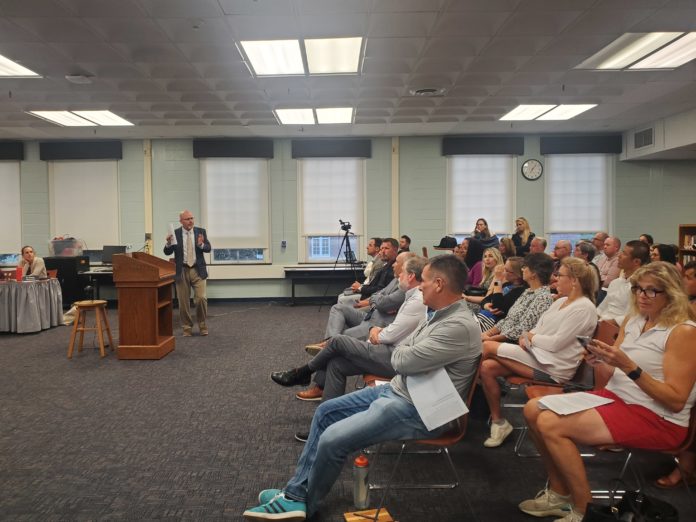Homeroom at HMHS: Is It Actually Effective?
November 16, 2022
Previously, Haddonfield Public Schools have implemented a mandatory homeroom every day for students from all schools for many years. Haddonfield Memorial High School has recently taken to making students attend a homeroom session for thirty minutes every couple of weeks and in order to do so they manipulate the traditional school schedule to fit the session in.
Normally on Tuesdays and Wednesdays, the high school follows a block-period schedule meaning that students have four classes each day, with 80-minute periods. On these days, students get the luxury of coming in 20 minutes later than they normally would. Recently, administrators have placed homeroom on one of the two block days and they account for this extra time by forcing students to come into school at 7:57 or cutting down lunch substantially.
Typically this homeroom period is used for grade-level and school updates, handouts, and SEL training. When the students of HMHS were asked whether or not they found the homeroom sessions effective, 94 percent or 46 out of 50 students surveyed said they found the period ineffective and a waste of time. Some even said they have skipped homeroom before because they thought it was pointless.
When asked what HMHS could do to make homeroom a better use of time, approximately 45% of students surveyed said that the most practical solution to the ineffectiveness of homeroom would be to eliminate it entirely.
16% of people surveyed said that it would be beneficial to eliminate homeroom altogether and instead have the topics and important announcements conveyed in students’ first-period classes. They proposed extending first period by 15 minutes once a week as an improved substitute for homeroom.
About 22% of students surveyed said that homeroom would be helpful to students if the agenda involved more fun activities while also communicating important information to students. Currently, a majority of students feel like homeroom is ineffective because it is a waste of their time. If homeroom was more concise, teachers could use the time effectively to encourage solutions for student problems such as workload, resources, and studying and discuss more relevant information.
The current homeroom setup does little to benefit HMHS students. Taking time out of lunch or dawg time to hold homeroom is harmful to students’ mental health. For a majority of students, lunch is their relaxing break in their stressful days and the delayed start time on block days is also beneficial to students because many are exhausted and the extra sleep is necessary for their mental, emotional, and social health.
Despite their differing stances on how to make homeroom more effective, 60% of students surveyed conveyed that they don’t even pay attention during it. Most people felt strongly that students would not pay attention to something that does little to benefit them, as it does much to harm them by usurping their relaxation time and stressing them out because of the constantly changing schedules to accommodate homeroom.
Overall, the data suggests that homeroom is ineffective for students in spite of HMHS’s good intentions. It is clear that the traditional homeroom cannot continue in this way. In order to make homeroom more beneficial for the students and staff at HMHS, the students have proposed considerable solutions like extending first period to incorporate important announcements and student bonding activities. Or, we could shorten homeroom so students can keep dawg time and longer lunches and use the time to cater to students’ needs.
Student life is an important part of HMHS. By listening to student-made suggestions on their daily schedule, we can create a more open and flexible environment at HMHS that both students and administrators can benefit from.







